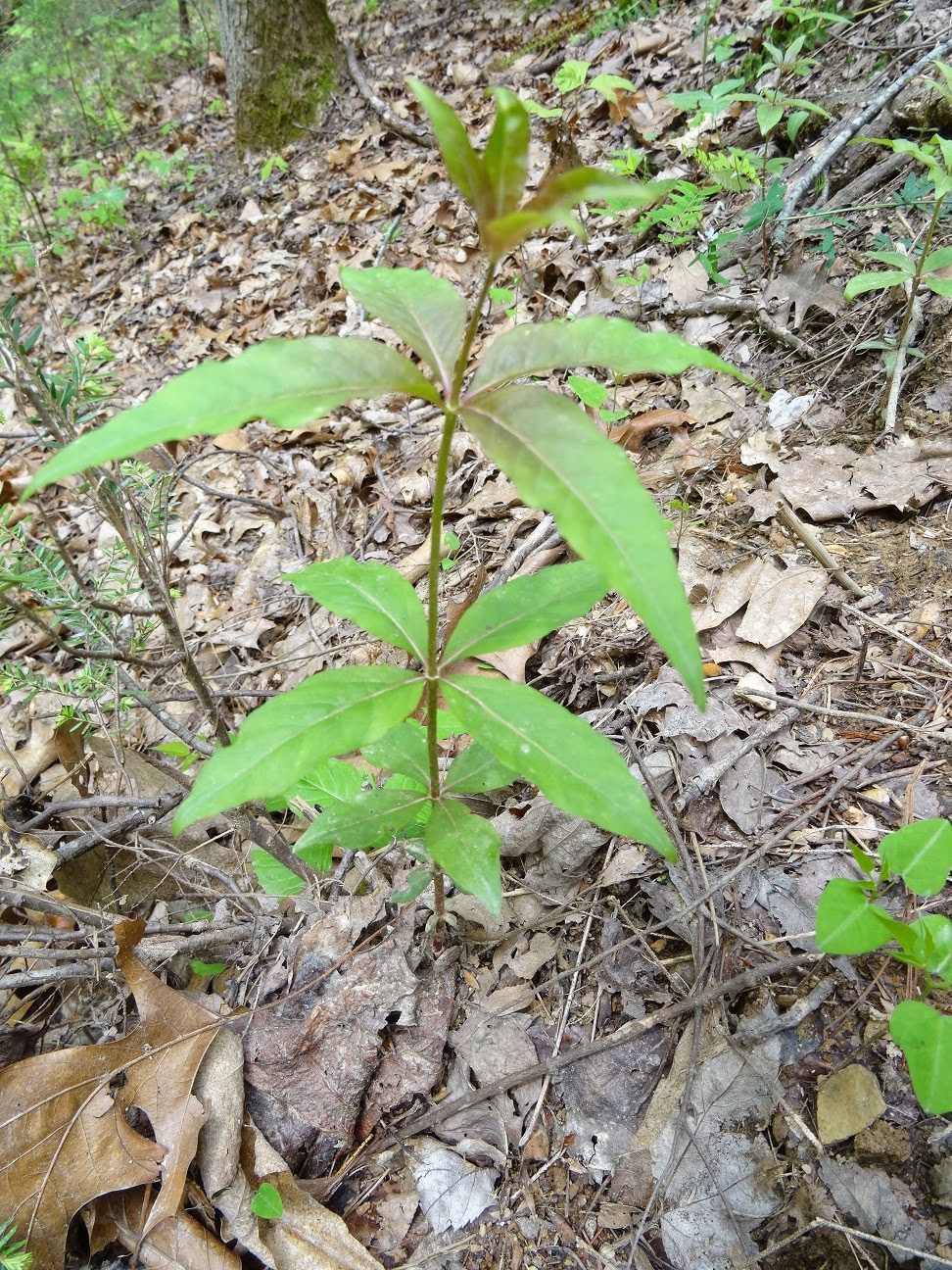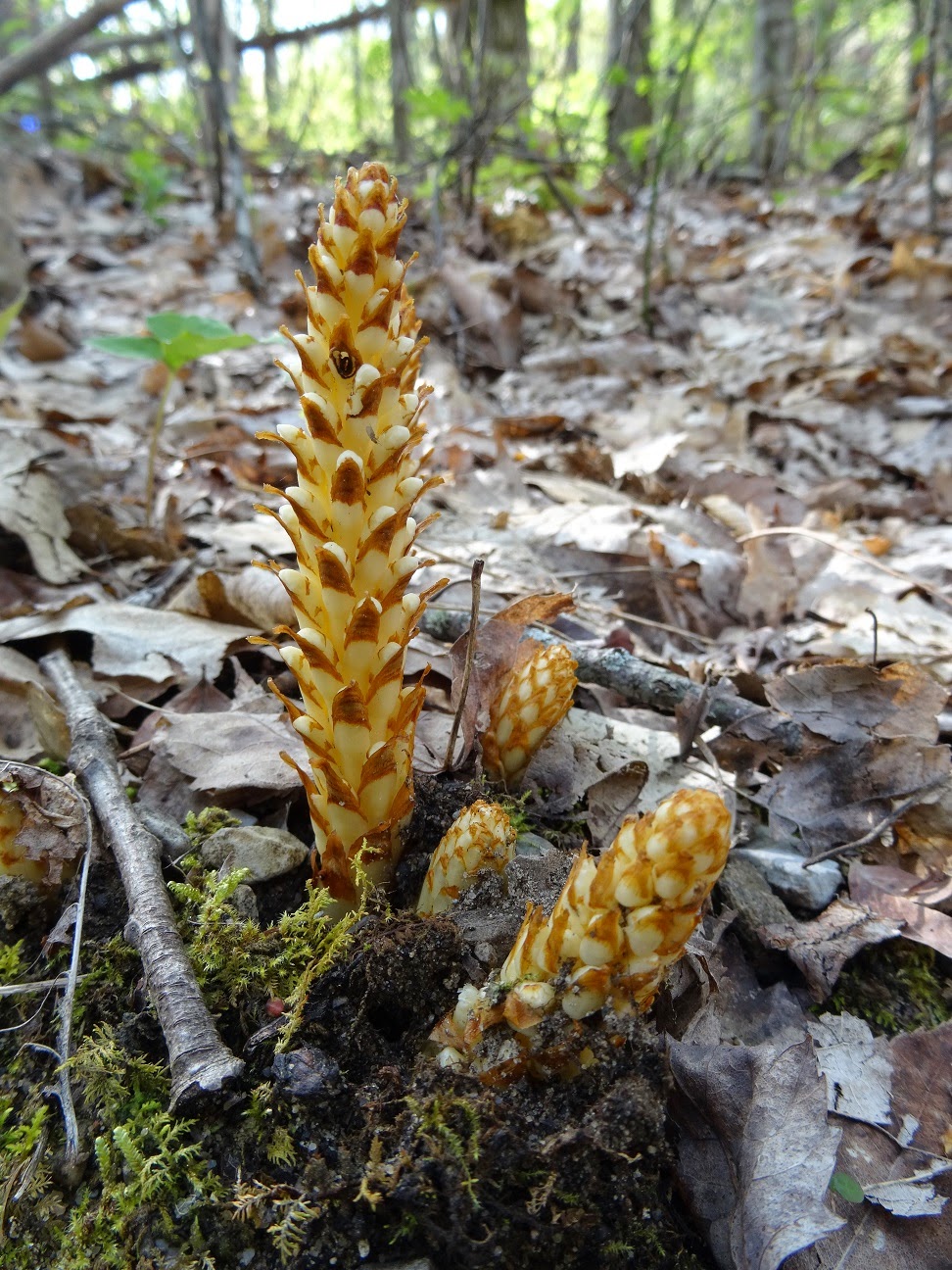As my last post suggested, I had a great time in Tennessee. On our drive down we made a transition from the leafless forests and brown ditches of Southern Ontario to Ohio where I started to spot Flowering Dogwood and Redbud blooms along the I-75 (Dayton had some spectacular displays of Red Cedar road cuts interspersed with Redbud at their floral peak). Passing through the Daniel Boone National Forest we got a taste of what was in store, a Knoxville gas station attendant gave me my first real dose of accent "You's err the third people frum Canada I seen all week!". We all beared the misfortune of driving through Sevierville/Pigeon Forge/Dollywood and Gatlinburg (think of Clifton Hill in Niagara Falls but on steroids). Let's just say you could probably play a round of mini putt or do a go-kart lap (and eat at a new Big Boy) at a new location every day for a year I'm sure.
Enough of that, this first picture kind of summed up the wow factor for the trip. Painted Trillium (Trillium undulatum), Rattlesnake Plantain (Goodyera pubescens) and Spotted Wintergreen (Chimaphila maculata). It seemed that in every direction something was either new to me (Painted Trillium), cool to see in Ontario (Rattlesnake Plantain), or a rare species by Ontario standards (Spotted Wintergreen).
Devil's Bit or Fairy Wand (Chamaelirium luteum). Just one of the many plants I approached with a "What the...?" look on my face.
The foliage of Goatsbeard (Aruncus dioicus) a little early to appreciate it's large white plume flowers.
Fourleaf Milkweed (Asclepias quadrifolia). This was growing at a trail edge beneath a full canopy in dry forest, a somewhat similar habitat to A. exaltata.
Sweetshrub (Calycanthus floridus), otherwise known as Carolina Allspice, also known as Bubby Bush. The flowers emit a pleasant odour and have been used for centuries as a sort of natural perfume or deodorant.
I was introduced to a new sedge, Cherokee Sedge (Carex cherokeensis). I also learned a bit about the Trail of Tears at the park interpretive centre, essentially the removal of natives westward to Oklahoma in the 1830's, depressing stuff to say the least.
A familiar site, Blue Cohosh (Caulophyllum thalictroides) in flower.
A trip leader pointed out a tall, straight shrub off to the edge of a trail which turned out to be Devil's Walkingstick (Aralia spinosa). Something I had seen for years in Newcomb's. The older gentleman that pointed it out said you can ID it by "grasping the stem and if your hands are red (ie bloody) you've got Devil's Walkingstick".
A shot of the foliage, this one was maybe 4m in height.
I come across Sicklepod (Arabis canadensis) occasionally in and around Cambridge. This one stood out in the sunlight.
One trail had a tonne of Puttyroot Orchid (Aplectrum hyemale). My first blog post made mention of Puttyroot search I was on last November. I had settled with this as an ID, but Keith commented that the plant is in fact Cranefly Orchid (Tipularia discolor). I have to get some better reference materials!
Vibrant purple underside of the leaf.
The seed pods.
One of my favourite ferns, Maidenhair Fern (Adiantum pedatum) was abundant on rock faces in some of the moist, low elevation forests.
For all of the Ohio State fans, Yellow Buckeye (Aesculus flava) this photo and the next, the first at a low elevation, the second near Newfound Gap at a higher elevation.
Another shot of Spotted Wintergreen, the stuff grew like Dandelions in some areas of dry forest!
Clinton's Lily (Clintonia umbellulata) soon to flower.
This was pointed out as Bear Corn (Conopholis americana), a much nicer name than the Squawroot I had learned it as.
Eastern Flowering Dogwood (Cornus florida). No photo can capture the effect of an expanse of understory lit up by hundreds of patches of white. The white "flowers" are actually modified leaves which surround a small green flower. While at Mammoth Cave National Park a few days earlier I joked to Alyssa "Sorry, gotta sidestep this patch of Wood Poppy to get a shot of the Flowering Dogwood, just too much Pawpaw in the way to get a decent shot" - a taste of things to come in a later post!
This was probably a trip highlight for me, not only a new sedge, but a standalone not in the Carex genus. This is Fraser's Sedge or Lily-leaf Sedge (Cymophyllus fraserianus). Very cool.
Seemingly the orchids are what many park visitors are there to see. Well used side paths lead you straight to them and poaching is an issue. It was like being on the show Mantracker, you would sense some minute disturbance, a freshly crushed leaf or turned over stone at the side of the trail...I'm on it...and low and behold there's your orchid.
Upon returning to a trailhead, a lady starting a hike asked "Did you dig up all the Lady's Slipper?" Hello to you too. I just responded "Nope, they're still there" (mutters under breath). Here we have Pink Lady's Slipper (Cypripedium acaule).
The place to bee.
This patch was interesting given their pale colour.
The Yellow Lady's Slipper (Cypripedium parviflorum var pubescens) was a show stopper. I'm happy we caught them at their prime.
I don't know that I've ever been as nervous as watching a frail old woman ascend a 45 degree slope covered in all sorts of deadfall, loose stones and slippery mud, just to get a close-up shot of one of these, yikes!
Alyssa (not an old woman) enjoying the peace of the Little Pigeon River. My happy place took the form of rummaging through the underbrush and shouting out all of the amazing plants I was coming across. "That's nice dear". More updates to come!





.JPG)

.JPG)
.JPG)

.JPG)
.JPG)
.JPG)

.JPG)
.JPG)





.JPG)
.JPG)
.JPG)
.JPG)
.JPG)
.JPG)

Your "Aplectrum hyemale" is actually Tipularia discolor, Cranefly Orchid.
ReplyDeleteAwesome, thanks for clarifying Keith. The leaves did seem suspect.
ReplyDelete